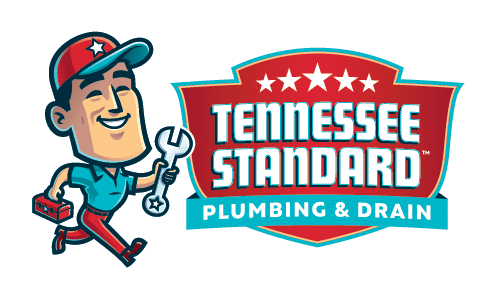There is never a good time for a toilet to overflow, and it becomes a gross inconvenience and a potentially costly situation if it happens regularly. However, it’s not enough to stop the overflowing water; you must identify the underlying problem and prevent it from happening again. In this article, we will troubleshoot some of the common causes for an overflowing toilet, the different types of clogs, and how to prevent them from happening again.
Common Reasons for Overflowing
At the moment, the reason your toilet is overflowing may not be as urgent as resolving the issue, but to prevent it from happening again, you will want to find the root cause.
Clogs
The most common cause of an overflow is a blockage in the pipe preventing the sewage from flowing down the pipes.Blockages can come from everyday use if there is not enough water flow or if too much paper is used, but they can also come from a foreign object in the pipes. Some everyday items that cause clogs include:
- Kids Toys
- Flushable Wipes
- Feminine Hygiene Products
- Ultra-Thick Toilet Paper
- Medication
- Paper Towels
Plumbing Defects
Toilet overflows aren’t always about a clog; sometimes, they can happen because something in the toilet isn’t working correctly. A faulty tank float mechanism or tank flapper seal may be the culprit.
Damaged Sewer Line
If the main sewer line gets cracked, blocked, or broken, it will not drain properly, which will cause a backup in the system. Tree roots are also a culprit for working their way into the line and backing up your home. Signs of the backup will start with the lowest drain in the house, which is usually a shower, but it can eventually work its way up to toilets and sinks.
Different Types of Clogs
Many imagine that their toilet is connected straight to the city sewer or septic tank. However, their toilet maybe connected to a series of branch lines in their drainage system which is also connected to their showers and sinks. Depending on the location of the clog there are different procedures that should be followed in order to release the clog.
Local Clogs
A local clog is located within the actual toilet itself. An easy way to gauge if your clog is in the toilet is to lightly turn on your shower or sink near the location of the clogged toilet. If these fixtures are flowing freely after minutes of running water, it’s a good indication that the clog may be in the toilet itself.
Local clogs are the best kind because they are usually the easiest to fix. A plunger is a great first option n tackling this type of problem.
Deep Drain Clogs
In some cases, the clog happens further down the line, past the toilet itself and in the drainage system. If this is the case, you will need a professional to see the problem and come up with the best solution. Depending on where the clog is, it may create an even bigger problem that backs up your sinks and showers.
In some unfortunate instances, you may even have a main sewer line clog, which can happen from years of build-up in the system, a broken pipe, or even tree roots growing through your drain.
How To Fix Local Clogs
If your toilet is overflowing, stopping the immediate cause of the problem is priority one. These are options that will work for common toilet clogs.
Check Your Tank and Fixtures
If you think it may not be a clog, check inside your tank to ensure there isn’t an issue with the plumbing.Luckily, it is usually easily fixable or replaceable when this is the issue.
Make sure to lightly check the other fixtures in the room where the toilet is overflowing. If they are backing up as well, there is likely a deeper drain clog and will need professional assistance.
Plunger
A plunger is a gold standard for fixing local clogs, and it will work pretty well most of the time as long as your clog is in the toilet and not in the pipes leading away from the toilet.If you are positive that the clog is local, a large plunger may be just what you need.
- Place the plunger firmly around the hole.
- Gently pump the plunger the first few times to create a good seal and prevent splashback.
- Pump vigorously 15 – 20 times to loosen the clog.
- Flush to see if the clog is gone; if not, repeat steps one through three.
Call In the Professionals
Sometimes a clog is too tough to handle on your own, and sometimes the things you are trying to do actually make the problem worse. If your clog is proving difficult or you want to ensure that the problem is completely solved, there is no shame in calling a professional with the tools to identify and eliminate the problem.
What Not to Do
Now that you know a few ways to tackle a clogged toilet, here are a few suggestions not to do. Many people turn to these methods to tackle a stubborn clog, but they can worsen the problem.
Don’t Keep Flushing
Sometimes people keep flushing in hopes that the clog will magically disappear with the added water, but most of the time, all that will do is compact the clog even more in the pipes.
Drain Cleaning Chemicals
The power of the commercial has led most of us to believe that if we have a clog, we should reach for a bottle of drain cleaner, but in most cases, this stuff does more harm than good. Yes, it can work to unclog a drain, but it can also eat away at your pipes, creating more significant problems later. In addition, if it doesn’t work, you are left with standing water that has been mixed with caustic chemicals that will burn your skin if it touches it.
Plumbing Snake
A plumbing snake in the hands of someone inexperienced can damage pipes and even be potentially dangerous. Most people don’t know that you are never supposed to send a snake from a cable machine down the toilet itself. First, the toilet should instead be fully removed unless you are using a specifically rated toilet auger. Professional plumbers have begun using more sophisticated methods and left the plumbing snake behind.
Wire Hanger
A full-on snake can damage your pipes, so it’s better left to a professional. Some think a makeshift tool might be what the doctor ordered if your clog is caused by a toy. THIS IS NOT THE CASE. Do not wrangle a hanger down your plumbing. Many plumbing horror stories show this is a bad and potentially dangerous decision.
How to Turn off Your Toilet
If the water keeps running and your toilet is about to overflow, the first thing you want to do is shut off the toilet to limit the mess.
- Remove the top of the tank and push the flapper down to prevent more water from entering the bowl.
- Find the water line leading to the toilet and follow it back to the wall. Sometimes it will be directly behind the toilet, and other times it will be hidden under the sink.
- Turn the valve to the right until it is snug. Please do not overtighten the nozzle, or you could break it, preventing the water from being stopped at all.
- If that doesn’t work, you may need to turn off the main water to the house until you can fix the problem.
Make Sure It’s Fixed for Good
If you have exhausted all your options and the problem persists, it’s time to call a plumber. We have the tools and experience to locate, diagnose, and solve the problem for good. If you have any questions or need help with a stubborn, overflowing toilet, contact us for help.



